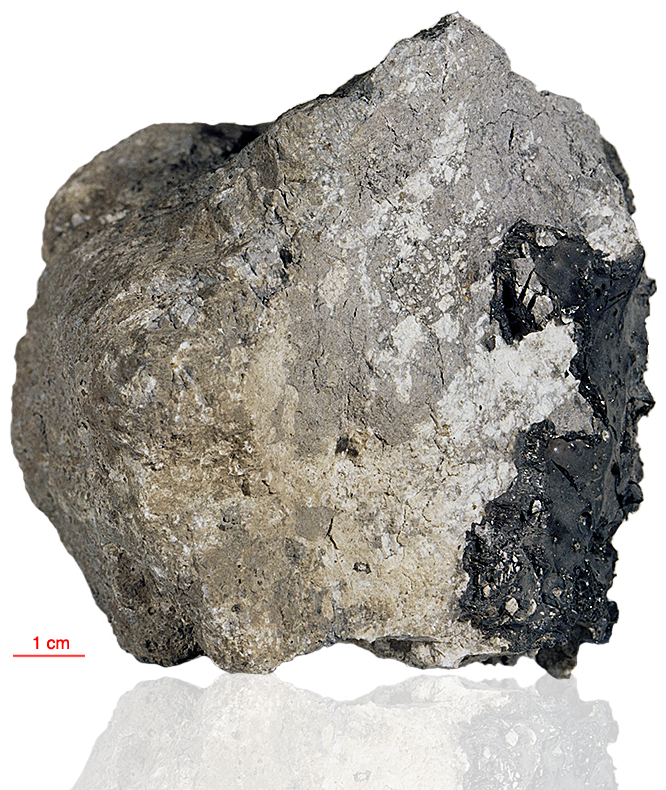
Fact sheet
64435 has a thick shiny black glass coat on one side as if it had once been an impact bomb that had its glass coat eroded away on the unprotected side. Our thin section does not include this coat. The majority of 64435 is a fine-grained grey impact melt with a very aluminous composition. In places it has been noted that plagioclase microlites in the matrix are in alignment. Clasts of coarse troctolitic anorthosite and fine troctolitic anorthosite are present. Rotation 1 shows a plagioclase feldspar crystal that has been subjected to considerable shock - enough to displace the twins planes. Rotation 2 shows angular fragments of devitrified glass. Opaque minerals include metallic iron, ilmenite, chromite and troilite.
The sample weighed 1079 grams before analysis and has not been dated.
Further details of this and other Apollo samples are here: http://curator.jsc.nasa.gov/lunar/
The Apollo 16 landing site was in the hilly region around Descartes crater in the lunar highlands. The landing spot was chosen to allow the astronauts to gather geologically older lunar material (Descartes Formation and the Cayley Formation) than the samples obtained in the first four landings, which were in or near lunar maria.
The mission lasted 11.1 days, with a stay on the lunar surface of 71 hours. The crew were on the lunar surface for 20.2 hours during which they traversed approximately 27 kilometers and collected approximately 96 kilograms of samples.
Apollo 16 was launched on 16 April 1972.






